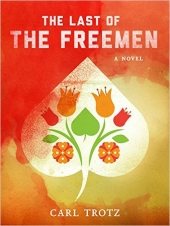Hi,
I'd like to let everyone know the Kindle version of my novel is free this weekend (June 18 and 19). “The Last of the Freemen” is a dystopian tale set in the not-too-distant future, following the descendants of the rebellious Saxon Freemen, and considers the importance of culture and kinship in resisting tyranny.
Who were the Freemen? Long ago when Charlemagne conquered the Saxons, he required that they convert to Christianity or be killed. This led to some violent years, with the last holdouts being the middle castes of free and freed men, who lost not only their religion, but also their right to own property allodially, that is, without any ruler having a claim on it for taxation or tribute; thus were they reduced to peasantry. (Thomas Jefferson envisioned an allodial system of land ownership in the U.S., sadly not adopted.)
So - where's the permaculture connection?
The modern Freemen in my novel have adapted by growing as much food as possible without overlords knowing, creating a measure of freedom, and cultural identity, for themselves. I've called it crypto-horticulture for lack of a better term, and kept with plants used traditionally for food in Central and Northern Europe; what they practice is akin to permaculture.
“Western” agriculture takes blame for things about which individual Western farmers have had very little to say. As James C. Scott points out in “The Art of Not Being Governed”, monocultures are not a natural human tendency - they arise when arbitrary rule comes along. Empires love monocultures; they provide control and revenue. Mark Shepard has also commented on this, I believe.
I see clear connections between freedom and sustainability. Permaculture is gently subversive to empire. “The Last of the Freemen” arises from my imaginings of what an anti-empire, sustainable culture might look like.
You can find it at
Amazon. Hope you enjoy.









